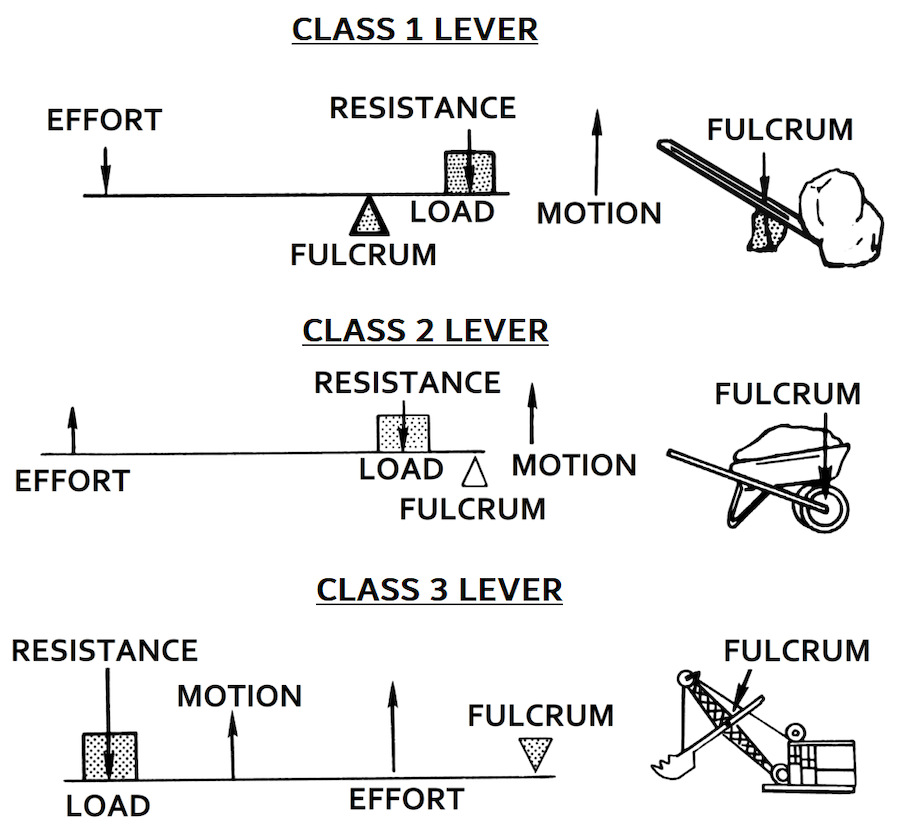第1682期:给我一个阿基米德
每个人都听过阿基米德的那句名言:
“Give me a lever long enough and a fulcrum on which to place it, and I shall move the world. ” ― Archimedes
这句话常被错误地翻译成:“给我一个支点,我就能撬动整个地球”。
这个翻译不对,起码不准确,因为只有一个支点有个屁用,更关键的是要有一根足够长、足够坚固的杠杆,这才是阿基米德提出的杠杆原理,这个假想的杠杆就叫做Archimedes lever.
杠杆原理(principle of levers or lever principle)的物理表达是:杠杆要达到受力平衡,作用在杠杆上的两个力矩(力与力臂的乘积)必须大小相等,旋转方向相反。
这个物理原理可以用最简单的一句英文表示:
“Effort times effort arm equals load times load arm”
数学公式:(E)(R) = (L)(r) 或 F1·L1=F2·L2
E=the effort force 力;
R= the lever arm connected to the effort 力臂
L= the load 阻力
r= the lever arm connected to the load 阻力臂
大多数人都是从初中物理老师口中得知这句话和这个原理的吧。
生活中,lever principle有三大类应用方式:

Courtesy – https://en.wikipedia.org/wiki/File:Lever_(PSF).png
人类根据这三种杠杆和支点的关系发明了各种工具和设备。
今天主要讲了fulcrum这个不太常用的词,希望帮你记住了这个词。
Fulcrum 有两种读音,都对:/ˈfʌlk.rəm/, /ˈfʊlk.rəm/.
最后再教你在英文中怎么读阿基米德这个名字 Archimedes /ˌɑːkɪˈmiːdiːz/
Fulcrum, a word that means “bedpost” in Latin, derives from the verb fulcire, which means “to prop.” When the word fulcrum was used in the 17th century, it referred to the point on which a lever or similar device (such as the oar of a boat) is supported. – Merriam-Webster
Reference
https://www.njes.chc.edu.tw/w2/magicscience12/back/010.htm
https://www.knipex.com/knowledge/pliers-knowledge/law-lever





